Art Sunday 07/20/08 Ancient Art: The Dead Sea Scrolls
The Dead Sea scrolls (click to enlarge) consist of roughly 1000 documents, including texts from the Hebrew Bible, discovered between 1947 and 1979 in eleven caves in and around the Wadi Qumran (near the ruins of the ancient settlement of Khirbet Qumran, on the northwest shore of the Dead Sea) in the West Bank. The texts are of great religious and historical significance, as they include practically the only known surviving copies of Biblical documents made before 100 AD, and preserve evidence of considerable diversity of belief and practice within late Second Temple Judaism.
The scrolls were found in 11 caves, ranging in distance of 125m (Cave 4) to about 1000m (Cave 1) from the settlement at Qumran, located 1km off the northwest shore of the Dead Sea. None of them were found at the actual settlement. It is generally accepted that a Bedouin goat- or sheep-herder by the name of Mohammed Ahmed el-Hamed (nicknamed edh-Dhib, “the wolf”) made the first discovery toward the beginning of 1947.
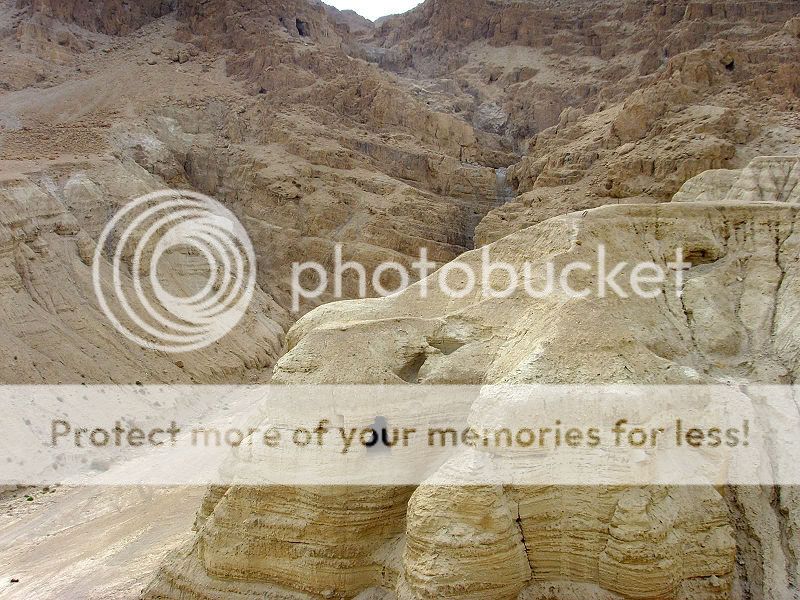
In the most commonly told story the shepherd threw a rock into a cave in an attempt to drive out a missing animal under his care. The shattering sound of pottery drew him into the cave, where he found several ancient jars containing scrolls wrapped in linen.
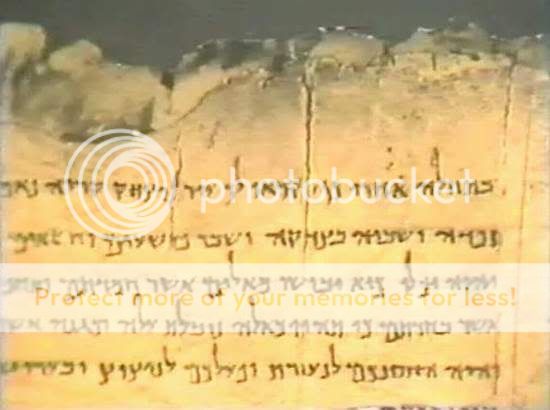
Dr. John C. Trever carried out a number of interviews with several men going by the name of Muhammed edh-Dhib, each relating a variation on this tale.
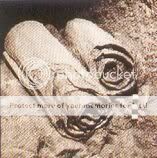
The scrolls were first brought to a Bethlehem antiquities dealer named Ibrahim ‘Ijha, who returned them after being warned that they may have been stolen from a synagogue. The scrolls then fell into the hands of Khalil Eskander Shahin, “Kando”, a cobbler and antiques dealer. By most accounts the Bedouin removed only three scrolls following their initial find, later revisiting the site to gather more, possibly encouraged by Kando. Alternatively, it is postulated that Kando engaged in his own illegal excavation: Kando himself possessed at least four scrolls.
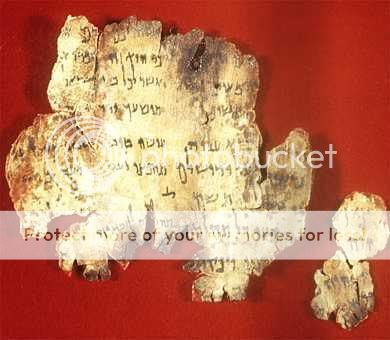
Arrangements with the Bedouins left the scrolls in the hands of a third party until a sale of them could be negotiated. That third party, George Isha’ya, was a member of the Syrian Orthodox Church, who soon contacted St. Mark’s Monastery in the hope of getting an appraisal of the nature of the texts. News of the find then reached Metropolitan Athanasius Yeshue Samuel, more often referred to as Mar Samuel.
After examining the scrolls and suspecting their age, Mar Samuel expressed an interest in purchasing them. Four scrolls found their way into his hands: the now famous Isaiah Scroll (1QIs), the Cummunity Rule, the Habakkuk Perhar (Commentary), and the Genesis Apocryphon. More scrolls soon surfaced in the antiquities market, and Professor Eleazer Sukenik, an Israeli archaeologist and scholar at Hebrew University, found himself in possession of three: The War Scroll, Thanksgiving Hymns, and another more fragmented Isaiah scroll.

By the end of 1947, Sukenik received word of the scrolls in Mar Samuel’s possession and attempted to purchase them. No deal was reached, and instead the scrolls found the attention of Dr. John C. Trever, of the American Schools of Oriental Research (ASOR). Dr. Trever compared the script in the scrolls to the Nash Papyrus. the oldest biblical manuscript at the time, finding similarities between the two.
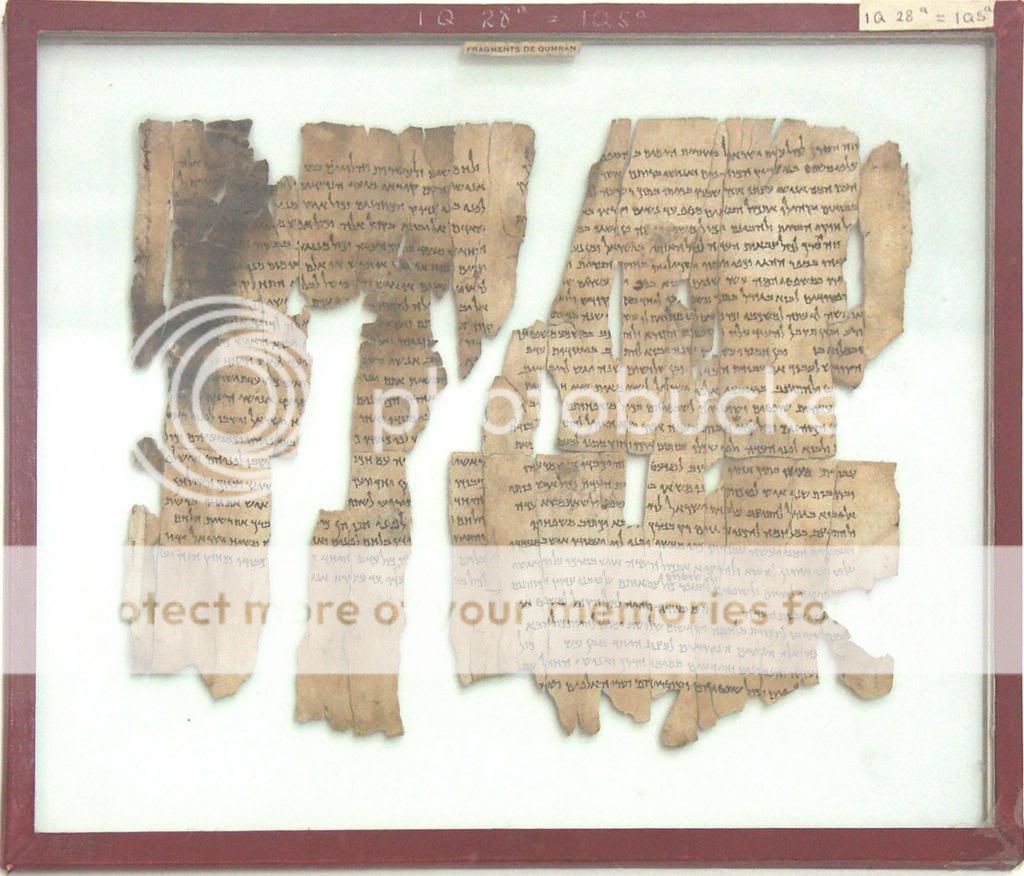
Dr. Trever, a keen amateur photographer, met with Mar Samuel on February 21, 1948, when he photographed the scrolls. The quality of his photographs often exceeded that of the scrolls themselves over the years, as the texts quickly eroded once removed from their linen wraps.
In March of that year, the 1948 Arab-Israeli War prompted the removal of the scrolls from the country for safekeeping. The scrolls were removed to Beirut.
In early September 1948, Mar Samuel brought Professor Ovid R. Sellers, the new Director of ASOR, some additional scroll fragments that he had acquired. By the end of 1948, nearly two years after the discovery of the scrolls, scholars had yet to locate the cave where the fragments had been found. With the unrest in the country, no large scale search could be undertaken. Sellers attempted to get the Syrians to help locate the cave, but they demanded more money than Sellers could offer.
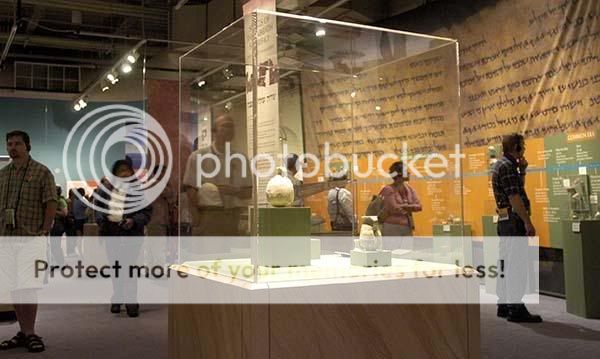
Dead Sea Scrolls on Exhibit in New York City
After some time, the Dead Sea Scrolls went up for sale in a June 1, 1954 advertisement in the Wall Street Journal.
| “ | MISCELLANEOUS FOR SALE THE FOUR DEAD SEA SCROLLSBiblical manuscripts dating back to at least 200 B.C. are for sale. This would be and ideal gift to an educational or religious institution by an individual or group. Box F 206 WALL STREET JOURNAL | ” |
On July 1, after some delicate negotiations, the scrolls, accompanied by the Metropolitan and two others, came to the Waldorf-Astoria Hotel in New York. Purchased for 250,000 US dollars. Only some of which Mar Samuel actually got, due to a mix up in paperwork, The US government received most of the money due to taxes.
Cave 1
was finally discovered on January 28, 1949 by a United Nations observer.
Cave 2
Bedouins discovered 300 fragments of other scrolls in Cave 2, including Jubilees & Ben Sirach in the original Hebrew.
Cave 3
One of the most curious scrolls is the Copper Scroll, Discovered in Cave 3, this scroll records a list of 64 underground hiding places throughout the land of Israel. According to the scroll, the deposits contain certain amounts of gold, silver, aromatics, and manuscripts. These are believed to be treasures from the Temple at Jerusalem that were hidden away for safekeeping.
Cave 4
80% of all the scrolls were found here and 90% was published.
Caves 5 and 6
Caves 5 and 6 were discovered shortly after cave 4. Caves 5 and 6 yielded a modest find.
Caves 7–10
Archaeologists discovered caves 7 through 10 in 1955, but did not find many fragments. Cave 7 contained seventeen Greek documents (including 7Q5 which would be the subject of controversy in the succeeding decades). Cave 8 only had five fragments and cave 9 held 18. Cave 10 contained nothing but an ostacon.
Cave 11
The Temple Scroll (so called because more than half of it pertains to the building of the Temple of Jerusalem) was found in Cave 11, and is the longest scroll. Its present length is 26.7 feet (8.148 meters), and the total length of the original scroll must have been over 28 feet (8.75m). This document, sectarian in nature, was regarded by the great Yigeel Yaden as the Torah according to the Essenes. However, that conflicts with a theory presented by Hartmann Steggemann, a good friend of Yaden, who believed that the Temple Scroll was not considered to be the Torah of the Essenes, but was just another record or document without any special significance. Steggemann’s theory is based on numerous points, for instance, that the Temple Scroll is not once mentioned or referred to in other Essene writings.

The significance of the scrolls relates in a large part to field of textual criticism. Before the discovery of the Dead Sea Scrolls, the oldest Hebrew manuscripts of the Bible were Masoretic texts dating to 9th century. The biblical manuscripts found among the Dead Sea Scrolls push that date back to the 2nd century BC. Before the discovery, the oldest Greek manuscripts such as Codex Vaticanus and Codex Sinaiticus were the earliest extant versions of biblical manuscripts. Although a few of the biblical manuscripts found at Qumran differ significantly from the Masoretic text, most do not. The scrolls thus provide new variants and the ability to be more confident of those readings where the Dead Sea manuscripts agree with the Masoretic text or with the early Greek manuscripts.
Further, the sectarian texts among the Dead Sea Scrolls, most of which were previously unknown, offer new light on one form of Judaism practiced during the Second Temple period.
The Second Temple was the reconstructed Temple in Jerusalem which stood between 516 BCE and 70 CE. During this time, it was the center of Jewish worship. The first temple was destroyed in 586 BCE when the Jews were exiled into Babylonian Captivity. Construction of a new temple was begun in 535; after a hiatus, work resumed ca. 521, with completion occurring in 516 and dedication in 515. The Romans destroyed Jerusalem and its Second Temple on August 4th 70 CE, ending the Great Jewish Revolt that began in 66 CE.
*This post was written with the help of Wikipedia.
|
starfishred wrote on Jul 19, ’08
very very nice laurita
|
|
kathyinozarks wrote on Jul 19, ’08
very informative-thanks
|
|
lauritasita wrote on Jul 19, ’08
You’re very welcome, and thanks for your comments !
|
|
forgetmenot525 wrote on Jul 19, ’08
thank you, I have read bits and pieces about these important primary source documents before but this is the first thime I have read the full story, so thank you, you’ve ‘joined up all the dots’ for me.
|
|
lauritasita wrote on Jul 19, ’08
You’re very welcome forgetmenot, I remember seeing them on display many years ago in New York City at a museum. Probably the Metropolian Museum of Art.
|
|
aimlessjoys wrote on Jul 19, ’08
Fascinating topic! I saw this exhibit in Houston, & was astounded at how small & impossible to decipher they seemed to be. The interactive parts of the exhibit were also interesting. Thanks for wonderful blog!
|
|
lauritasita wrote on Jul 19, ’08
I think many people forgot about these. I don’t hear anyone talk about this fascinating subject anymore. Maybe someone bought all of them.
|
|
asolotraveler wrote on Jul 20, ’08
as always… you have the BEST posts in Blogland! thanks
|
|
philsgal7759 wrote on Jul 20, ’08
Great blog these have always fascinated me
|
|
lauritasita wrote on Jul 20, ’08
Thanks for all your great comments ! The Dead Sea Scrolls have been a major interest to me, too !
|
|
wickedlyinnocent wrote on Jul 20, ’08
Very interesting and informative, the Dead Sea Scrolls make a fascinating topic.
|
|
lauritasita wrote on Jul 20, ’08
I would like to get someone to translate the some of the pages found.
|
|
tulipsinspring wrote on Jul 22, ’08
This is absolutely fascinating. I find it amazing that such treasures remain hidden in the world, waiting to be found. I hope, like these, they are found. It gives me chills to think of these, created so long ago, and now passed down to us, as if we can hear the voices of those who created them. And what we can learn from such amazing discoveries is stunning. I’m glad there were pictures taken, and it’s always sad when archaeological sites are corrupted — we have no way of knowing what we have lost forever.
This is a wonderful blog. I’ve never read the whole story this way either, and it was wonderful. Great blog!!! |


Comments
Art Sunday 07/20/08 Ancient Art: The Dead Sea Scrolls — No Comments
HTML tags allowed in your comment: <a href="" title=""> <abbr title=""> <acronym title=""> <b> <blockquote cite=""> <cite> <code> <del datetime=""> <em> <i> <q cite=""> <s> <strike> <strong>